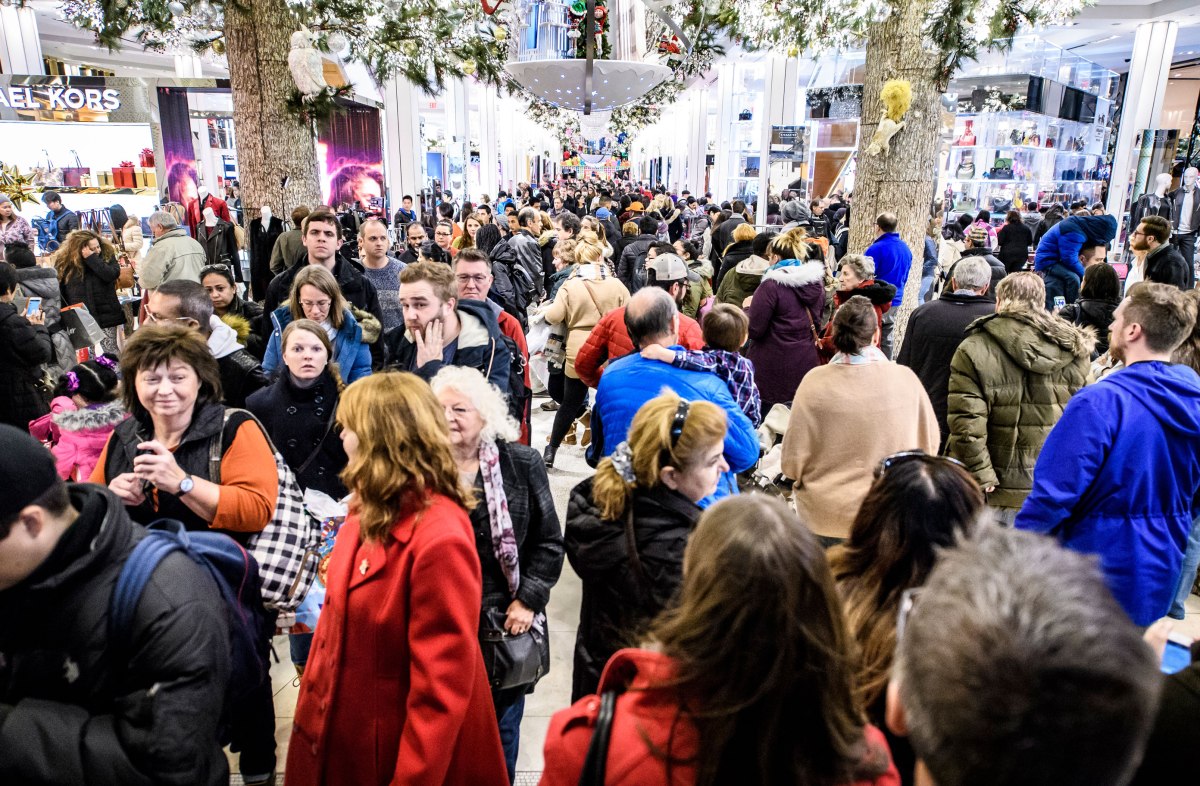Thanksgiving 2022 online sales pip past forecasts at $5.3B, up 2.8% on last year, mobile accounted for 55% of all purchases
Analysts and e-commerce leaders have been predicting a muted online holiday shopping season this year, with sales in the first three weeks of November essentially flat over a year ago due to a weaker economy, inflation, and more people returning to shopping in stores again in the wake of the Covid-19 pandemic. But looking at Thanksgiving, the first big day of holiday spend, the numbers appear to be coming in stronger than expected. Adobe Analytics has published figures that indicate $5.29 billion was spent online on Thanksgiving Thursday. That is up 2.9% on a year ago, and ahead of the $5.1 billion Adobe initially said it was expecting for the day.
Mobile devices continue to play a growing role in how people are shopping. Some 55% of online sales were on mobile devices yesterday, up 8.3% over a year ago.
“Mobile shopping had struggled to grow for many years, as consumers found the experience lacking compared to desktop,” said Vivek Pandya, lead analyst, Adobe Digital Insights, in a statement. “Thanksgiving this year has become an inflection point, where smartphones drove real growth and highlights how much these experiences have improved.”
Salesforce has more buoyant figures: it notes from its calculations, based on 1.5 billion shoppers, that looking worldwide, online sales grew 1% on Thanksgiving day to $31 billion, while in the U.S. specifically they were up 9% to $7.5 billion. Salesforce also said that 78% of sales traffic came from mobile devices. Average order values, it said, were $105 globally and $120 for U.S. sales.
They may have different figures and measurement parameters, but both are seeing growth, so the bigger question may actually be whether the bump in activity seen on Thanksgiving will be sustained through the rest of Cyber Week — which includes today’s Black Friday, Cyber Monday, and the weekend in between — and indeed the rest of the days and weeks leading up to the New Year. Overall, Adobe has predicted that Cyber Week will generate $34.8 billion in online spend this year, up 2.8% on a year ago when the week brought in $33.9 billion in sales.
2021’s Cyber Week was actually down 1.4% compared to 2020, so this represents a turnaround.
As a point of comparison on those figures, the National Retail Federation is predicting holiday sales growth of 6% to 8%, while another analysis group, Digital Commerce 360, is predicting growth of 6.1% for the period.
Be that as it may, sales may not be totally sustained or even in the coming days. Adobe predicted that sales for today — the famous Black Friday — are expected to hit $9 billion, which is up only 1% on 2021 figures.
Adobe says that it analyzes some 1 trillion visits to U.S. retail sites, tracking sales for some 100 million SKUs and 18 product categories. Its analytics will include anonymized data from some of its customers: it says it is used by some 85% of the biggest online retailers in the U.S. It said that so far some $77.74 billion has been spent online since the first of November.
The holiday shopping season is an important period to track for a couple of reasons. First, it is traditionally a retailer’s most lucrative selling period, one that can make or break its whole year. (That is the reason why Amazon’s recent earnings, where it provided reduced sales guidance and warned of lower-than-expected holiday spending, sent its stock tumbling nearly 20%.)
Because of that outsized importance, collectively, e-commerce holiday figures can serve as a bellwether for the e-commerce market as a whole.
But if growth is what we’re after, there are some indicators of stormy waters ahead. Adobe found that the first three weeks of November saw flat online sales of $64.59 billion, up just 0.1% over 2021.
The shape of “holiday shopping” has changed massively with the rise of e-commerce. Shopping online extended the days and hours that people shopped — the day after Thanksgiving, Black Friday, used to mark the ‘first day’ of the holiday shopping season, but that went out the window years ago with sales starting on the Thursday, and people using the day off from work to get clicking. Now, both major and minor retailers are leaning into the ever-earlier start of holiday shopping as a way to try to bring in more sales in a tighter market. And they are offering more ways of paying: buy-now-pay-later was up 1.3% in terms of sales and 0.7% in terms of orders (indicating more of it being used for bigger-ticket items).
That’s against a backdrop of physical retailers getting increasingly aggressive in capturing back their audience. The National Retail Federation in the U.S. said it expects 166.3 million consumers to shop during the long weekend.
“While there is much speculation about inflation’s impact on consumer behavior, our data tells us that this Thanksgiving holiday weekend will see robust store traffic with a record number of shoppers taking advantage of value pricing,” NRF President and CEO Matthew Shay said in a statement. “We are optimistic that retail sales will remain strong in the weeks ahead, and retailers are ready to meet consumers however they want to shop with great products at prices they want to pay.”
Adobe notes that today, the biggest discounts it’s seeing online are in categories like toys (as much as 34% off listed price), electronics (27%), and computers (18%). Squishmallows, Roblox, Paw Patrol, Hot Wheels, Cocomelon and L.O.L Surprise Dolls are all selling well.
We’ll be posting more updates on sales figures as they come in.




